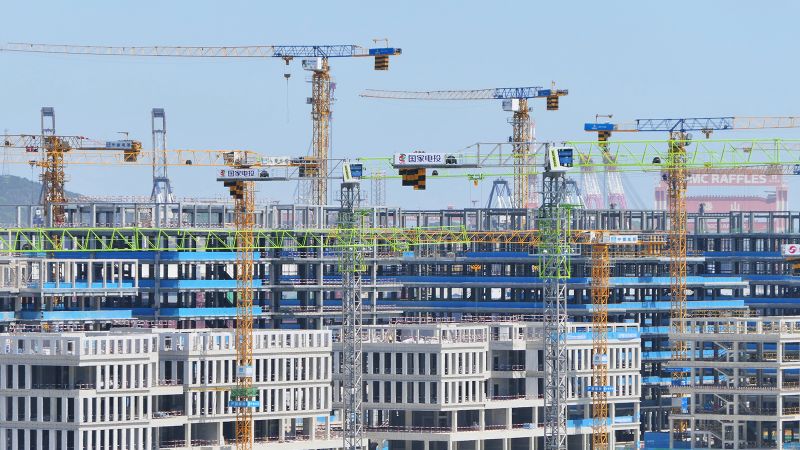Beijing has recently announced its most ambitious plan yet to rescue its struggling property market, a move that investors have eagerly awaited. The plan includes a policy that involves local governments buying unsold homes from developers and converting them into affordable housing, as well as reductions in mortgage interest rates and downpayment ratios. In addition, there is also 300 billion yuan ($41.5 billion) in cheap central bank cash to fund state purchases of unsold properties. The urgency to stabilize the property sector has become a top priority for Beijing, as the real estate sector is crucial to the Chinese economy.
Despite the urgency of the plan, experts are skeptical about its effectiveness due to its small scale and potential funding issues. The total value of unsold homes, unfinished projects, and unused land in China is significant, estimated at about 30 trillion yuan ($4.1 trillion). To reduce the supply of housing to levels seen in 2018 may require more than 7 trillion yuan ($967 billion) for all cities, which is significantly more than the funding announced by the People’s Bank of China. Without addressing these funding challenges, the plan may not make a notable difference in the housing inventory.
The funding size of 500 billion yuan announced by the PBOC has been criticized as being underwhelming by some analysts. The severe housing problem in China requires a much larger investment, with estimates suggesting that clearing the backlog of empty or unfinished homes would require hundreds of billions of dollars. The current plan may not be sufficient to address the massive number of pre-sold homes that remain unbuilt, highlighting the need for more substantial funding and expansion of the rescue plan.
Local governments are facing challenges in finding the necessary funding beyond the small amounts channeled by state banks. Many are already heavily indebted, with hidden debts totaling around $15 trillion, and have been forced to cut spending and suspend services due to financial distress. The property market slump has exacerbated their financial woes, as land sales typically contribute significantly to local government revenue. Putting more debt on already leveraged local governments raises concerns about further financial instability.
Experts believe that addressing the oversupply of unsold homes is just the first step in reviving the property market. The government must also boost housing demand and mitigate the contraction in property construction to stabilize the sector. The external environment has become increasingly difficult, with the US government announcing new tariffs on China and the possibility of similar action from the European Union. Former President Donald Trump has threatened to impose further tariffs on Chinese imports, which could impact China’s growth rate.
Despite the challenges and uncertainties surrounding the rescue plan, some analysts believe that it is a step in the right direction to stabilize expectations and prevent a potential crisis. It is crucial for Beijing to expand the plan and introduce more detailed policies to address the broader issues in the housing market. Taking a long-term perspective, the plan could help avoid a deflationary spiral like Japan experienced. Overall, the hope is that this plan could mark the beginning of the end of China’s housing crisis.


